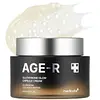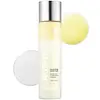What's inside
What's inside
 Key Ingredients
Key Ingredients

 Benefits
Benefits

 Concerns
Concerns

 Ingredients Side-by-side
Ingredients Side-by-side

Water
Skin ConditioningGlycerin
HumectantGlycereth-26
HumectantButylene Glycol
HumectantMethylpropanediol
SolventVinyldimethicone
Niacinamide
Smoothing1,2-Hexanediol
Skin ConditioningBetaine
HumectantIsononyl Isononanoate
EmollientIsohexadecane
EmollientSodium Polyacrylate
AbsorbentAmmonium Acryloyldimethyltaurate/Vp Copolymer
Phenyl Trimethicone
Skin ConditioningDimethiconol
EmollientAroma
Chondrus Crispus Powder
AbrasiveC18-21 Alkane
SolventGlutathione
Ethylhexylglycerin
Skin ConditioningPolyglyceryl-10 Laurate
Skin ConditioningGlyceryl Acrylate/Acrylic Acid Copolymer
HumectantAgar
MaskingXanthan Gum
EmulsifyingHydrogenated Lecithin
EmulsifyingPolyglyceryl-10 Oleate
Skin ConditioningAdenosine
Skin ConditioningTromethamine
BufferingAcrylates/C10-30 Alkyl Acrylate Crosspolymer
Emulsion StabilisingGlucose
HumectantLimonene
PerfumingGellan Gum
Thioctic Acid
AntioxidantCaprylic/Capric Triglyceride
MaskingCeramide NP
Skin ConditioningSorbitan Laurate
EmulsifyingHydroxyethylcellulose
Emulsion StabilisingAcetyl Dipeptide-1 Cetyl Ester
Skin ConditioningPalmitoyl Tripeptide-5
Skin ConditioningAcetyl Hexapeptide-1
Skin ConditioningSoluble Collagen
HumectantWater, Glycerin, Glycereth-26, Butylene Glycol, Methylpropanediol, Vinyldimethicone, Niacinamide, 1,2-Hexanediol, Betaine, Isononyl Isononanoate, Isohexadecane, Sodium Polyacrylate, Ammonium Acryloyldimethyltaurate/Vp Copolymer, Phenyl Trimethicone, Dimethiconol, Aroma, Chondrus Crispus Powder, C18-21 Alkane, Glutathione, Ethylhexylglycerin, Polyglyceryl-10 Laurate, Glyceryl Acrylate/Acrylic Acid Copolymer, Agar, Xanthan Gum, Hydrogenated Lecithin, Polyglyceryl-10 Oleate, Adenosine, Tromethamine, Acrylates/C10-30 Alkyl Acrylate Crosspolymer, Glucose, Limonene, Gellan Gum, Thioctic Acid, Caprylic/Capric Triglyceride, Ceramide NP, Sorbitan Laurate, Hydroxyethylcellulose, Acetyl Dipeptide-1 Cetyl Ester, Palmitoyl Tripeptide-5, Acetyl Hexapeptide-1, Soluble Collagen
Water
Skin ConditioningTriethylhexanoin
MaskingHydrogenated Poly(C6-14 Olefin)
EmollientButylene Glycol
Humectant1,2-Hexanediol
Skin ConditioningMethylpropanediol
SolventNiacinamide
SmoothingPhenyl Trimethicone
Skin ConditioningDiethoxyethyl Succinate
SolventPolyglyceryl-10 Myristate
Skin ConditioningParfum
MaskingHippophae Rhamnoides Oil
EmollientEthylhexylglycerin
Skin ConditioningAllantoin
Skin ConditioningHydrogenated Lecithin
EmulsifyingHibiscus Esculentus Fruit Extract
Skin ConditioningCorchorus Olitorius Leaf Extract
Skin ConditioningCarum Petroselinum Extract
Skin ConditioningGlutathione
Sodium Gluconate
Skin ConditioningAdenosine
Skin ConditioningCellulose Gum
Emulsion StabilisingHexyl Cinnamal
PerfumingGluconolactone
Skin ConditioningMelia Azadirachta Leaf Extract
Skin ConditioningLinalool
PerfumingMelia Azadirachta Flower Extract
Skin ConditioningLavandula Angustifolia Flower Water
Skin ConditioningHyacinthus Orientalis Extract
Skin ConditioningCentaurea Cyanus Flower Extract
AstringentChamomilla Recutita Flower/Leaf Extract
AntimicrobialCurcuma Longa Root Extract
MaskingBorago Officinalis Extract
EmollientSalvia Sclarea Extract
AntiseborrhoeicLimonene
PerfumingAlpha-Arbutin
AntioxidantOcimum Sanctum Leaf Extract
Skin ConditioningCorallina Officinalis Extract
Skin ConditioningThioctic Acid
AntioxidantBiotin
AntiseborrhoeicBiotinoyl Tripeptide-1
Acetyl Hexapeptide-8
HumectantTripeptide-1
Skin ConditioningTripeptide-3
Skin ConditioningMyristoyl Pentapeptide-17
Skin ConditioningHexapeptide-9
Skin ConditioningWater, Triethylhexanoin, Hydrogenated Poly(C6-14 Olefin), Butylene Glycol, 1,2-Hexanediol, Methylpropanediol, Niacinamide, Phenyl Trimethicone, Diethoxyethyl Succinate, Polyglyceryl-10 Myristate, Parfum, Hippophae Rhamnoides Oil, Ethylhexylglycerin, Allantoin, Hydrogenated Lecithin, Hibiscus Esculentus Fruit Extract, Corchorus Olitorius Leaf Extract, Carum Petroselinum Extract, Glutathione, Sodium Gluconate, Adenosine, Cellulose Gum, Hexyl Cinnamal, Gluconolactone, Melia Azadirachta Leaf Extract, Linalool, Melia Azadirachta Flower Extract, Lavandula Angustifolia Flower Water, Hyacinthus Orientalis Extract, Centaurea Cyanus Flower Extract, Chamomilla Recutita Flower/Leaf Extract, Curcuma Longa Root Extract, Borago Officinalis Extract, Salvia Sclarea Extract, Limonene, Alpha-Arbutin, Ocimum Sanctum Leaf Extract, Corallina Officinalis Extract, Thioctic Acid, Biotin, Biotinoyl Tripeptide-1, Acetyl Hexapeptide-8, Tripeptide-1, Tripeptide-3, Myristoyl Pentapeptide-17, Hexapeptide-9
 Reviews
Reviews

Ingredients Explained
These ingredients are found in both products.
Ingredients higher up in an ingredient list are typically present in a larger amount.
1,2-Hexanediol is a synthetic liquid and another multi-functional powerhouse.
It is a:
- Humectant, drawing moisture into the skin
- Emollient, helping to soften skin
- Solvent, dispersing and stabilizing formulas
- Preservative booster, enhancing the antimicrobial activity of other preservatives
Adenosine is in every living organism. It is one of four components in nucleic acids that helps store our DNA.
Adenosine has many benefits when used. These benefits include hydrating the skin, smoothing skin, and reducing wrinkles. Once applied, adenosine increases collagen production. It also helps with improving firmness and tissue repair.
Studies have found adenosine may also help with wound healing.
In skincare products, Adenosine is usually derived from yeast.
Learn more about AdenosineButylene Glycol (or BG) is used within cosmetic products for a few different reasons:
Overall, Butylene Glycol is a safe and well-rounded ingredient that works well with other ingredients.
Though this ingredient works well with most skin types, some people with sensitive skin may experience a reaction such as allergic rashes, closed comedones, or itchiness.
Learn more about Butylene GlycolEthylhexylglycerin (we can't pronounce this either) is commonly used as a preservative and skin softener. It is derived from glyceryl.
You might see Ethylhexylglycerin often paired with other preservatives such as phenoxyethanol. Ethylhexylglycerin has been found to increase the effectiveness of these other preservatives.
Glutathione is an antioxidant naturally found in our bodies. It is made up of three amino acids: glycine, cysteine, and glutamic acid.
As an antioxidant, it prevents oxidative damage to parts of our cell.
While glutathione is said to help with fading dark spots, the results from research are inconclusive. Further studies are needed. With that said, gluthatione has been shown to protect our skin from UV-B induced damage.
This ingredient is naturally occurring in plants, animals, fungi, and some bacteria.
Learn more about GlutathioneHydrogenated Lecithin is created from the hydrogenation of lecithin (a group of phospholipids). Hydrogenation is a chemical reaction between hydrogen and another element.
This ingredient is an emollient and emulsifier. As an emollient, it helps soften skin by trapping moisture within. As an emulsifier, it prevents oil and water ingredients from separating.
Limonene is a fragrance that adds scent and taste to a formulation.
It's found in the peel oil of citrus fruits and other plants such as lavender and eucalyptus. The scent of limonene is generally described as "sweet citrus".
Limonene acts as an antioxidant, meaning it helps neutralize free radicals.
When exposed to air, oxidized limonene may sensitize the skin. Because of this, limonene is often avoided by people with sensitive skin.
The term 'fragrance' is not regulated in many countries. In many cases, it is up to the brand to define this term. For instance, many brands choose to label themselves as "fragrance-free" because they are not using synthetic fragrances. However, their products may still contain ingredients such as essential oils that are considered a fragrance.
Learn more about LimoneneMethylpropanediol is a synthetic solvent and humectant.
As a solvent, it helps dissolve other ingredients, helping to evenly distribute ingredients throughout the product. This ingredient has also been shown to have antimicrobial properties which makes it a preservative booster.
Methylpropanediol is able to add a bit of moisture to the skin. It also helps other ingredients be better absorbed into the skin, such as salicylic acid.
Learn more about MethylpropanediolNiacinamide is a multitasking form of vitamin B3 that strengthens the skin barrier, reduces pores and dark spots, regulates oil, and improves signs of aging.
And the best part? It's gentle and well-tolerated by most skin types, including sensitive and reactive skin.
You might have heard of "niacin flush", or the reddening of skin that causes itchiness. Niacinamide has not been found to cause this.
In very rare cases, some individuals may not be able to tolerate niacinamide at all or experience an allergic reaction to it.
If you are experiencing flaking, irritation, and dryness with this ingredient, be sure to double check all your products as this ingredient can be found in all categories of skincare.
When incorporating niacinamide into your routine, look out for concentration amounts. Typically, 5% niacinamide provides benefits such as fading dark spots. However, if you have sensitive skin, it is better to begin with a smaller concentration.
When you apply niacinamide to your skin, your body converts it into nicotinamide adenine dinucleotide (NAD). NAD is an essential coenzyme that is already found in your cells as "fuel" and powers countless biological processes.
In your skin, NAD helps repair cell damage, produce new healthy cells, support collagen production, strengthen the skin barrier, and fight environmental stressors (like UV and pollution).
Our natural NAD levels start to decline with age, leading to slower skin repair, visible aging, and a weaker skin barrier. By providing your skin niacinamide, you're recharging your skin's NAD levels. This leads to stronger, healthier, and younger looking skin.
Another name for vitamin B3 is nicotinamide. This vitamin is water-soluble and our bodies don't store it. We obtain Vitamin B3 from either food or skincare. Meat, fish, wheat, yeast, and leafy greens contain vitamin B3.
The type of niacinamide used in skincare is synthetically created.
Learn more about NiacinamidePhenyl Trimethicone is a silicon-based polymer. It is derived from silica.
Phenyl Trimethicone is used as an emollient and prevents products from foaming.
As an emollient, it helps trap moisture in the skin. It is considered an occlusive.
Learn more about Phenyl TrimethiconeThioctic Acid is an enzyme and antioxidant. A more common name for this is Alpha Lipoic Acid.
Alpha Lipoic Acid can be naturally found in the mitochondria of every cell.
Antioxidants help fight free-radicals. Free-radicals are molecules that may damage your skin cells. The antioxidants in Alpha Lipoic Acid have been shown to fight damage from cigarette smoke.
Studies also show Alpha Lipoic Acid plays a role in wound healing.
Thioctic Acid will break down when exposed to sunlight.
Many foods contain thioctic acid, including tomato, brussel sprouts, spinach, and broccoli.
Learn more about Thioctic AcidWater. It's the most common cosmetic ingredient of all. You'll usually see it at the top of ingredient lists, meaning that it makes up the largest part of the product.
So why is it so popular? Water most often acts as a solvent - this means that it helps dissolve other ingredients into the formulation.
You'll also recognize water as that liquid we all need to stay alive. If you see this, drink a glass of water. Stay hydrated!
Learn more about Water